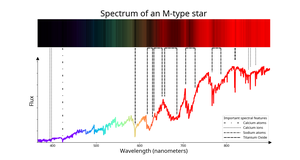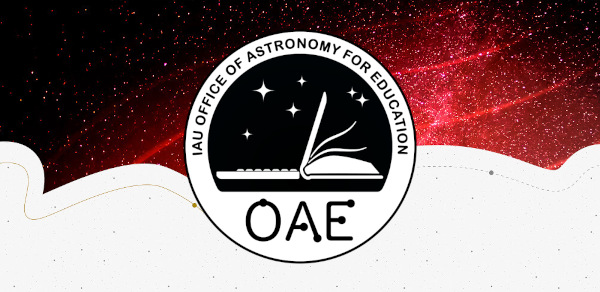Glossarbegriffe: M-Stern
Description: Ein Stern mit der Spektralklasse "M". Astronomen erkennen M-Sterne an molekularen Absorptionslinien in ihren Spektren, vor allem von Titanoxid. Sie haben typische (effektive) Temperaturen zwischen etwa 2500 Kelvin (K) und 3700 K. Im Vergleich zu anderen Sternen erscheinen sie dem menschlichen Auge rot. Hauptreihensterne mit dem Spektraltyp M werden als Rote Zwerge bezeichnet. Sterne des Spektraltyps M können aber auch Rote Riesen oder Rote Überriesen sein. Rote Riesen oder Rote Überriesen sind hauptsächlich M-Sterne, können aber auch K-Sterne sein, oder zu exotischeren Spektralklassen mit starken Kohlenstofflinien gehören. Beteigeuze im Sternbild Orion ist ein Überriese vom Typ M.
Zugehörige Glossarbegriffe:
- Hauptreihe
- Molekül
- Roter Zwerg
- Roter Riese
- Roter Überriese
- Spektralklasse
- Spektrum
- Reddening
- Effektivtemperatur
- Leuchtkraftklasse
See this term in other languages
Term and definition status: The original definition of this term in English have been approved by a research astronomer and a teacher The translation of this term and its definition is still awaiting approval
The OAE Multilingual Glossary is a project of the IAU Office of Astronomy for Education (OAE) in collaboration with the IAU Office of Astronomy Outreach (OAO). The terms and definitions were chosen, written and reviewed by a collective effort from the OAE, the OAE Centers and Nodes, the OAE National Astronomy Education Coordinators (NAECs) and other volunteers. You can find a full list of credits here. All glossary terms and their definitions are released under a Creative Commons CC BY-4.0 license and should be credited to "IAU OAE".
Related Diagrams
Spectrum of an M-type star
Bildnachweis: IAU OAE/SDSS/Niall Deacon
License: CC-BY-4.0 Creative Commons Namensnennung 4.0 International (CC BY 4.0) icons









